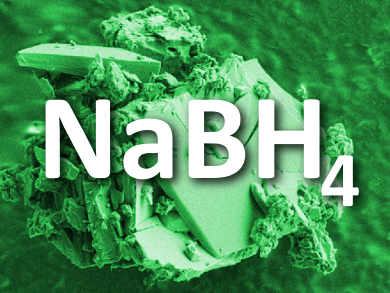Hydrogen storage is the bottleneck for the implementation of a so-called “hydrogen economy”, which could replace the fossil fuels used today with hydrogen generated by renewable energy. Sodium borohydride (NaBH4) is a promising hydrogen storage material for some applications. It releases hydrogen during hydrolysis, forming sodium metaborate hydrate (NaBO2·x H2O) as a byproduct.
Recycling NaBO2 and regenerating NaBH4 usually involves annealing dehydrated NaBO2 and MgH2 at high temperatures and hydrogen pressures. This process is costly, energy-intensive, and hazardous, which prevents the practical use of NaBH4 as a hydrogen storage material.
Michael Felderhoff, Max Planck Institute for Coal Research, Mülheim an der Ruhr, Germany, Min Zhu, South China University of Technology, Guangzhou, and colleagues have developed an energy-efficient process to recycle the NaBO2·x H2O formed during hydrolysis of NaBH4. The team ball-milled a mixture of either NaBO2·2 H2O or NaBO2·4 H2O with Mg to regenerate NaBH4 and achieved yields of 68.55 % and 64.06 %, respectively.
The approach avoids the energy-extensive dehydration of NaBO2·x H2O as well as the need for expensive MgH2 as a reactant. Instead, MgH2 is formed as an intermediate during the ball milling process. According to the researchers, a cost analysis for NaBH4 regenerated by this method shows it to be promising as a practical hydrogen supply for vehicles.
- Enhancing the Regeneration Process of Consumed NaBH4 for Hydrogen Storage,
Liuzhang Ouyang, Wei Chen, Jiangwen Liu, Michael Felderhoff, Hui Wang, Min Zhu,
Adv. Energy Mater. 2017.
DOI: 10.1002/aenm.201700299


![Synthesis of [c2]Daisy Chains via Mechanochemistry](https://www.chemistryviews.org/wp-content/uploads/2025/04/202504_RotaxanesWithSolidStateMechanochemistry-125x94.png)

